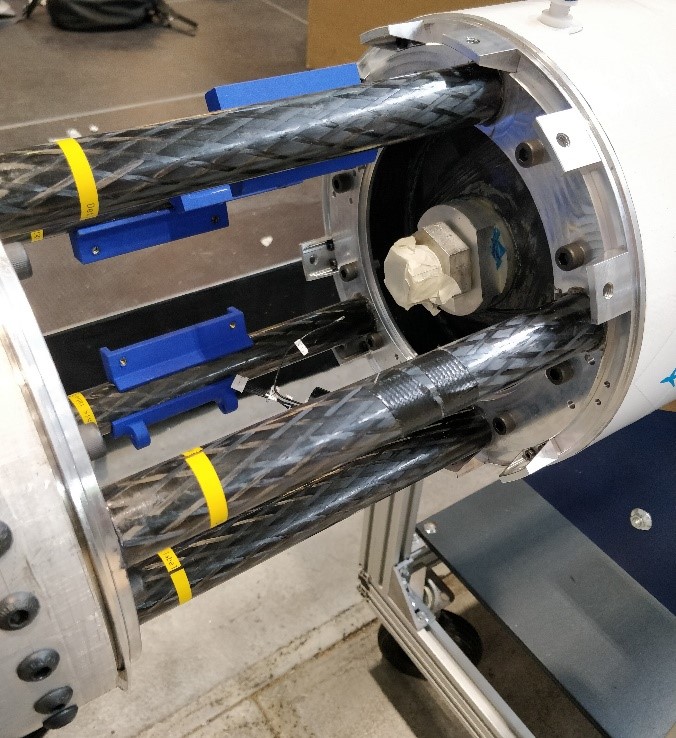
The engine bay is one of the most critical components, though it is quickly overlooked. In this series of 2 blogposts we’ll be taking a look at how it works and what’s inside. In this first part we’ll look at what makes up the engine bay, while in the second part some of the most important bits inside will be looked at.
The engine bay is the area in between the oxidizer tank and the engine that houses a bunch of electronics, as well as the pipes and tubes that allow the oxidizer to flow into the engine when we want it to (also known as the feedsystem). This all has to be done in as small a space as possible, to minimize the weight of the structure.
The main structure of the engine bay consists of two rings, or bulkheads, connected to each other by carbon fiber rods. One of the rings attaches to a lip (or skirt) of the oxidizer tank, while the other bolts on to the engine. To make sure the alignment is perfect, we glue the two rings together with the carbon fiber rods. This has to be extremely precise, as any error will result in the rocket trying to go off course, as the engine would not be pointed straight to the back of the rocket. The rings are produced by Heemskerk, who can make this part with the incredible precision and complexity that is required. This design allows us to access electronics and the feedsystem to the last moments, allowing us to fix problems if they come up.

A view of the engine bay without any of the components installed inside. In the right of the image you can see the opening of the oxidizer tank, which is covered by tape to prevent contaminants from coming inside.
These carbon fiber rods are used as supports to glue all the components of the engine bay to. In order to make sure everything fits, we first had to make a mock-up and a digital model, and test it all out. There are so many parts crammed in the engine bay that we even need to consider the order we place stuff in, so we can still reach everything we need to.
Look forward to next post, when we’ll show you some of the things that actually go inside the engine bay!
by Daan van Heteren

